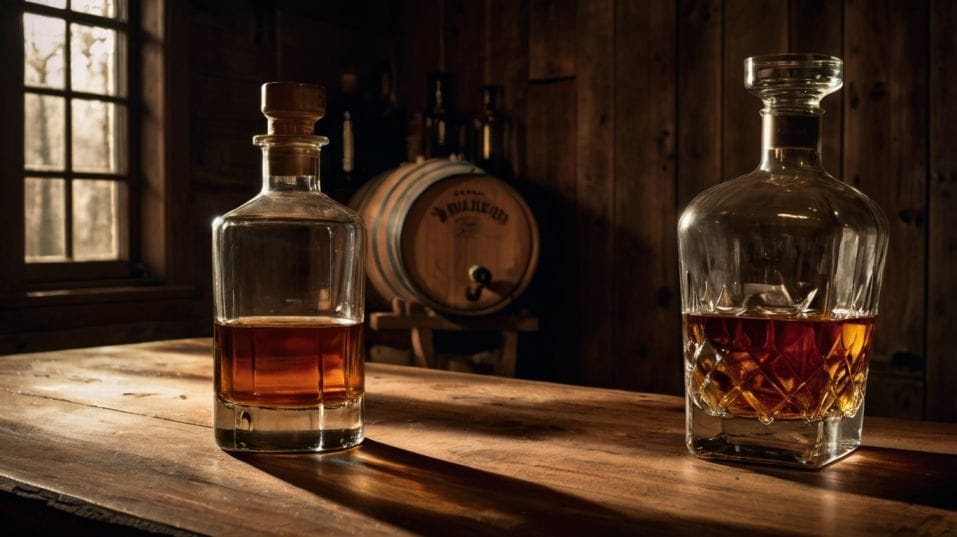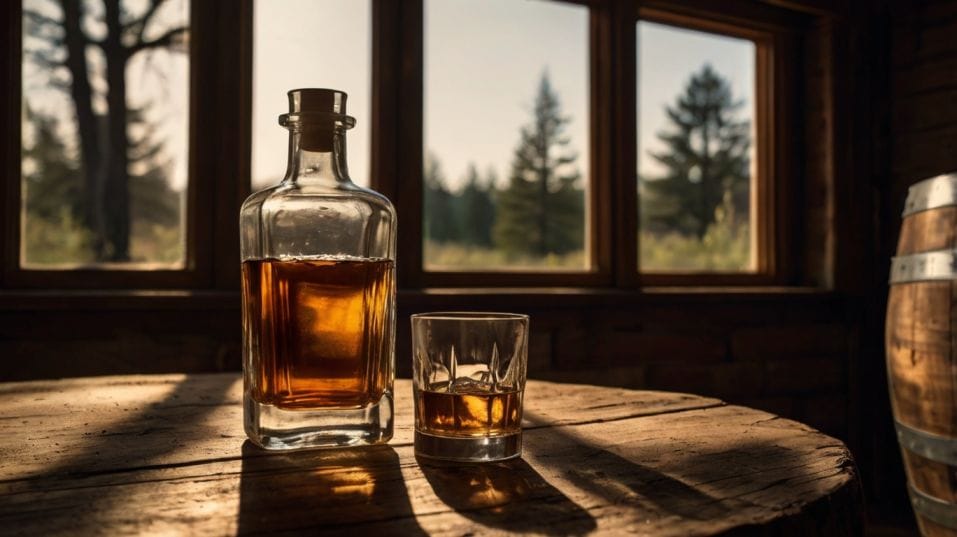Cask Strength vs. Standard: Which Tastes Better?
Curious about cask strength vs. standard whiskey? Learn how proof impacts flavor, balance, and control—then taste smarter, not harder.

Ever wonder why some whiskeys hit like a freight train while others glide in smooth? If you're diving deeper into whiskey, you'll soon hit a crossroads: cask strength or standard proof.
Is one actually better—or just louder? Forget the hype. This guide breaks down what really happens when you change the proof, how it affects flavor, and which bottle might suit your palate best right now. Let’s make your next pour count.
What You’re Really Drinking: Proof Isn’t Just a Number
Let’s be clear: proof changes everything. Flavor, mouthfeel, aroma—it all shifts depending on how much alcohol is in the glass.
Standard whiskey—often bottled at 40% to 46% ABV (80 to 92 proof)—is diluted with water after aging. That’s not a flaw.
That’s the distillery deciding how they want it to taste. Proofing down makes whiskey softer, more approachable, and consistent across large batches.
A standard bourbon or Scotch at 43% ABV is designed to be sipped straight, enjoyed easily, and understood quickly. It’s what you pour when you want a clear, accessible snapshot of a style.

Cask strength, also called barrel proof or full proof, is a different beast. No water, no filters, straight from the barrel into the bottle.
Proof varies, usually between 110–135 (55–67.5% ABV). These whiskeys are volatile. One sip might blow your head off. Another might reveal a layered, slow-burning complexity you never knew whiskey could have.
The key difference isn’t just strength. It’s control. Standard whiskeys tell you what the distillery wants you to taste. Cask strength lets you explore what you can pull from the spirit.
Why Cask Strength Tastes Bigger (But Not Always Better)
Think of cask strength like raw audio. All the distortion, richness, clarity, and background noise are intact.
When you sip a cask strength whiskey, you're getting the full spectrum of flavor compounds—fatty acids, esters, aldehydes, phenols—that might otherwise be muted or lost when watered down.
More alcohol means more solubility for oils and flavor molecules. That translates to a richer nose, thicker texture, and deeper finish—if you can handle the heat.
Water plays a critical role here, and not just the kind that gets added at the distillery. When you taste a cask strength whiskey, adding your own drops of water can open up flavors hiding behind the alcohol.
It’s not just dilution—it’s calibration. You're tuning the spirit to your palate. Too hot? A splash tames it. Too flat? Let it sit and breathe. You’re not just drinking—you’re adjusting the flavor spectrum.
But here’s the reality check: cask strength isn’t magic. Some bottles are high proof because the brand wants to cash in on the trend, not because the flavor justifies it.
A weak barrel doesn’t get better by being stronger. Some cask strength whiskeys taste hot, one-dimensional, or downright harsh.
What Standard Proof Teaches You About Balance
Standard proof whiskey exists for a reason. It’s not training wheels—it’s a tuning fork.
When done right, a whiskey proofed to 43% or 46% can offer stunning clarity. It shows how well the distiller blended the barrels, balanced the oak, and built flavor over time. You don’t have to wrestle with the alcohol to get to the good stuff.
In fact, for new drinkers, standard proof can be essential. It helps you isolate specific flavor notes without the ethanol overwhelming your senses.
You can focus on whether you’re tasting orchard fruit or dried fruit, cinnamon or clove, sweet vanilla or dry oak.
Standard bottlings also help you build a sense of “house style.” Try the flagship expressions of three distilleries at 43%—you’ll start to notice patterns.
Some are cereal-forward, others lean into dark sugars or tannic spice. That knowledge becomes your map. When you move into higher-proof territory, you'll already know what you're looking for.
And if you’re collecting? Standard releases are foundational. They show where a brand starts. Knowing them helps you spot when something special happens in a limited release or private barrel pick.
The Smart Tasting Move: Compare, Don’t Choose
You don’t have to pick sides. In fact, if you're only drinking one or the other, you’re limiting what your palate can learn.
Take a whiskey you like at standard proof. Now find its cask strength version—many brands offer both. Taste them side by side. Don’t rush. Nose both. Sip both.
Add a little water to the high-proof version, slowly. Watch what opens up. Notice which flavors get louder or softer. Track how the mouthfeel changes, how the finish evolves.
Some things to pay attention to:
- Texture: Cask strength whiskey usually feels thicker, oilier, and more mouth-coating.
- Aroma intensity: Standard proof might smell more elegant; cask strength can feel bolder but less precise.
- Flavor layering: Some notes only show up once you’ve diluted a cask strength pour. Others disappear.
- Finish: High-proof whiskey often leaves a longer, warmer afterglow—but not always.
Collecting With Confidence
If you’re collecting for flavor, experience, or value—not hype—understanding the role of proof helps you make sharper decisions.
Cask strength bottles tend to be more expensive, limited, and sought after. But rarity doesn’t equal quality. Learn to taste past the ABV and decide if the whiskey justifies the proof. That’s how you spot real value—and skip the flashy duds.
On the flip side, don’t ignore core releases. Many are consistent, accessible, and historically important. They show a distillery’s foundation.
And if you understand the foundation, you’ll better recognize when a cask strength release really elevates it.
Final Thoughts
Cask strength whiskey isn’t a flex—it’s a tool. A powerful one. It gives you more control, more flavor, and more room to experiment. But it also asks more of you. You need to taste patiently, dilute smartly, and pay attention.
Standard proof whiskey is no less serious. It’s how you learn balance, style, and structure. If you’re building a real palate—or a serious collection—you need both.
So stop asking which is better. Start asking what you’re trying to taste tonight. Pour a cask strength dram. Add water. Listen closely. Then go back to a standard release. Compare. Contrast. Take notes. Ignore the buzz. Trust your tongue.
Your palate doesn’t get sharper by drinking harder. It gets sharper by drinking smarter. Go pour something with purpose.




